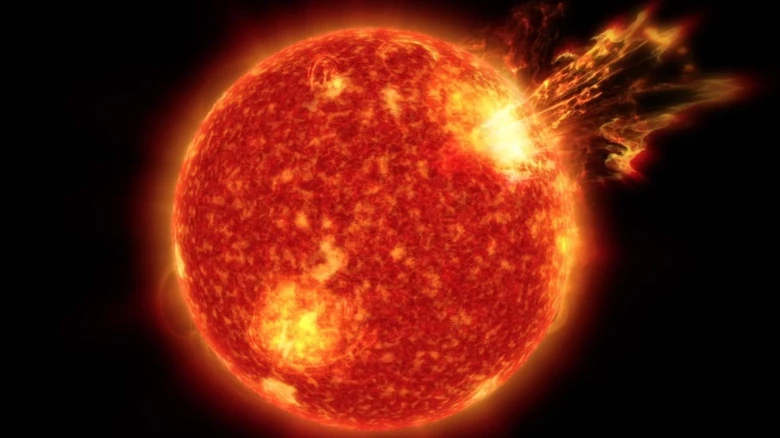Solar flares, according to Nasa, are intense explosions of energy. Solar flares and eruptions can disrupt radio communications, electric power networks, and navigation signals, as well as endanger spacecraft and people.
Digital Desk: A huge solar outburst ionised the upper layer of the Earth's atmosphere, causing a severe shortwave radio blackout over Southeast Asia, Australia, and New Zealand. The flare was caused by sunspot AR3256, which is located near the star's southwestern limb in our Solar System.
Nasa's Solar Dynamics Observatory, which monitors the Sun, captured the explosion. This flare was designated an X1.2 flare. The X-class signifies the most extreme flares, while the number indicates its strength.
Solar flares, according to Nasa, are intense explosions of energy. Solar flares and eruptions can disrupt radio communications, electric power networks, and navigation signals, as well as endanger spacecraft and people.
This was the Sun's eighth such explosion in just three months in 2023. It equals the total number of flares produced by the Sun in 2022. The explosion represents the Sun's rapid increase in activity as it moves closer to peak activity in its solar cycle.
According to Spaceweather.com, the flare reached Earth on March 29, ionising the atmosphere and producing signal loss and other propagation effects below 30 MHz, which Ham radio operators may have detected.
The occurrence came just days after the greatest geomagnetic storm in three years hit Earth. A tremendous explosion from a giant coronal hole in the Sun's southern hemisphere caused the geomagnetic storm.
Geomagnetic storms are large disturbances of the Earth's magnetosphere that occur when energy from the solar wind is exchanged very efficiently into the space environment surrounding Earth.
Plasma blasted high above the sun's surface last week, reaching a height of 14 Earths piled together. The Sun has caused four noteworthy solar flares, 22 coronal mass ejections, and a geomagnetic storm in the recent week.

Leave A Comment